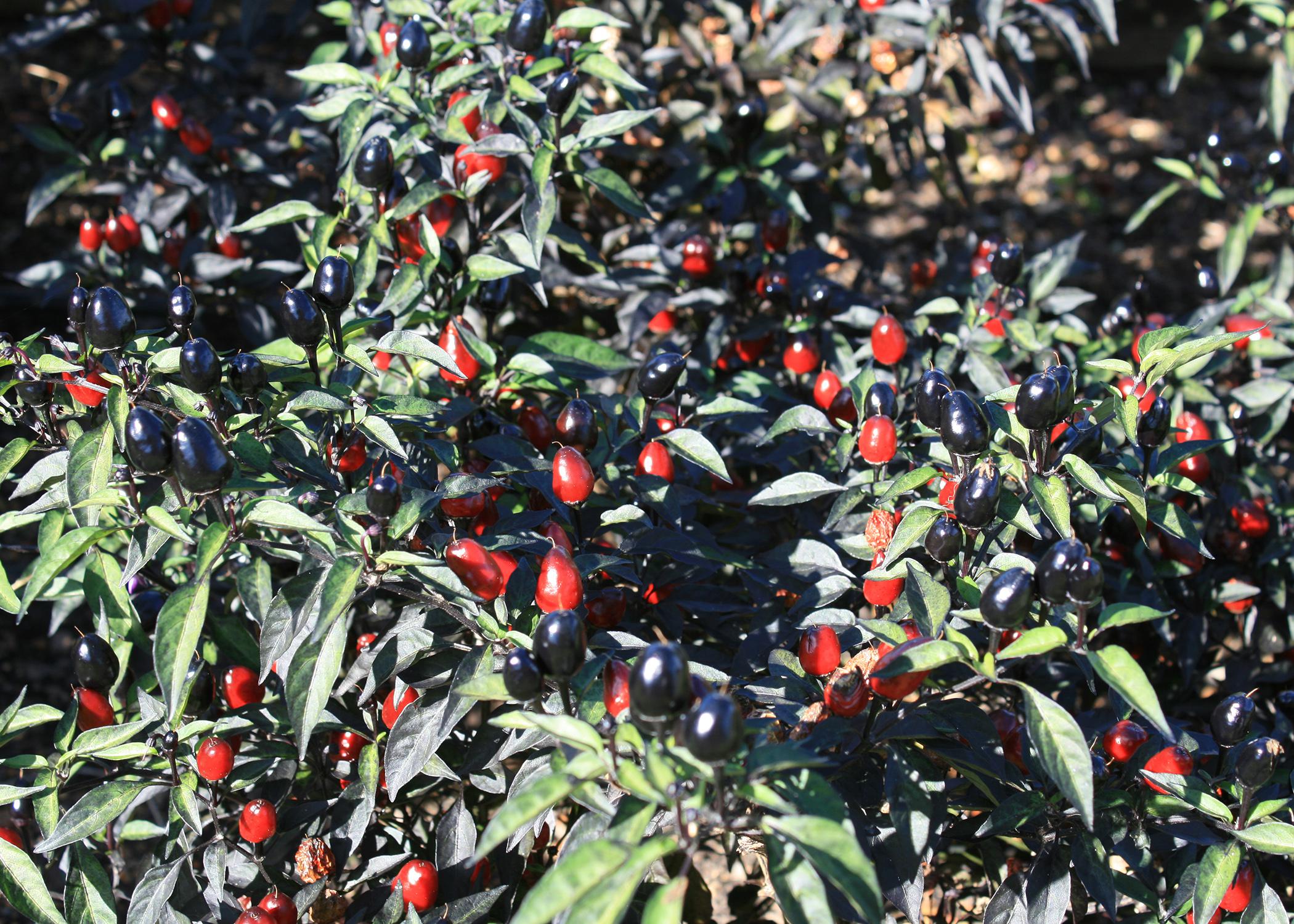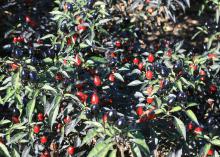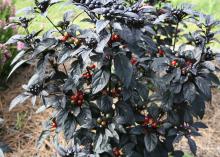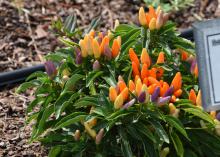Information Possibly Outdated
The information presented on this page was originally released on August 10, 2015. It may not be outdated, but please search our site for more current information. If you plan to quote or reference this information in a publication, please check with the Extension specialist or author before proceeding.
Ornamental peppers make gardens glow
A little planning and planting early in the season can really pay off with big color during the dog days of summer that we’re “enjoying” right now. One of my newest favorite groups of plants for hot summer and fall -- yes, I said fall -- are ornamental peppers.
Ornamental peppers begin setting fruit as the temperature rises, and they keep producing through fall. These peppers are quite versatile garden performers and work well in combination containers or massed planted in the landscape.
It seems like ornamental peppers are continually in flower, so it is very common to have peppers in various stages of coloration. This is a fantastic feature and provides for an ever-changing look in the landscape. Once fruit has set, it usually remains on the plant for a few months, maintaining the beautiful colors. Only when the peppers begin to dry will the color start to fade.
All-America Selections has done a fantastic job of selecting and recommending ornamental peppers for our landscapes. Black Olive has an upright growth habit that reaches about 20 inches tall with dark-purple foliage. Dark, purplish-black fruit clusters produced all along the stems mature to bright red and offer a really nice contrast to the dark foliage.
Black Pearl is one of my favorites, with its clusters of shiny, black, round fruit that mature to brilliant red in contrast to the black foliage as the season progresses. Black Pearl’s heat and drought tolerance is a great feature, especially for our Mississippi gardens.
An interesting All-America Selections winner is NuMex Easter from the Chile Pepper Institute at New Mexico State University. This plant is part of their holiday pepper collection and features fruit ranging in pastel colors from lavender to yellow and light orange that are reminiscent of colorful Easter eggs.
Despite their colorful, fruity show, these plants require only minimal care. There is no need to deadhead because the fruit are persistent and long lasting, and they thrive in the full sun much better than most gardeners do.
Ornamental peppers prefer to grow in consistently moist soil, but don’t be overly generous with water. The plants will not tolerate waterlogged soil. Fertilize with a good, slow-release fertilizer early in the season and use a water-soluble fertilizer again about six weeks after transplanting. In late summer, it is common for the foliage to lighten up and begin to look “hungry,” so go ahead and feed again with the water-soluble fertilizer.
A word of caution: Most of these ornamental peppers are edible but extremely hot, so take care to keep curious youngsters from trying the brightly colored fruit. While it’s too late to plant ornamental peppers this year, why not consider them for your garden and landscape next year?
Mississippi State University has five plant trial sites where researchers evaluate a variety of ornamental peppers for our landscapes. Email me at gary.bachman@msstate.edu, and I’ll send you information on visiting these evaluation trials.










